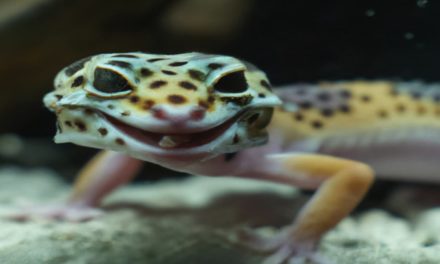
Like all pets leopard geckos come with their unique set of health challenges. One such issue that’s been buzzing in the gecko community is Metabolic Bone Disease (MBD). Which is easily prevented with my simple tips here.
So let’s dive in and unravel the mystery behind MBD in leopard geckos.
Understanding MBD: Beyond the Bones
Metabolic Bone Disease isn’t just a term vets throw around. It’s a genuine leopard gecko disease and should be a concern on the radar of every owner. It stems from nutritional imbalances, primarily involving calcium, phosphorus, and vitamin D3. The tricky part? It’s a silent troublemaker. Early signs are subtle, making it a sneaky ailment to spot.
Spotting the Culprits: Symptoms of MBD
- Difficulty in movement, almost like your gecko has two left feet.
- Deformities that weren’t there during your last “photoshoot” with them.
- A jaw that feels softer than usual, making mealtime a challenge.
- A sudden disinterest in their favorite treats.
- Digestive issues, making bathroom breaks a tad uncomfortable.
The Root of the Problem: Causes of MBD
Imagine making a smoothie but forgetting the main ingredient. It’s just not the same, right? Similarly, when geckos miss out on their essential nutrients, their health takes a hit. And this is a really upsetting disease to see in a leo so don’t let it happen to you as it’s really easy to avoid with just a little bit of care and planning.
Calcium: The Unsung Hero of Gecko Health
Calcium is to geckos what spinach is to Popeye. It’s the backbone of their skeletal system. Without it, bones turn weak, almost like jelly.
Vitamin D3: The Magic Key
Now, calcium alone won’t do the trick. Enter Vitamin D3, the magic key that lets calcium do its job. Without D3, calcium is like a locked treasure chest, really valuable but you just can’t get to it.
Avoiding MBD: Prevention Tips
They say prevention is better than cure, and boy, are they right! Here’s your golden checklist to keep MBD at bay:
- Ensure a calcium-rich diet. Think of it as their superfood.
- UVB lighting is a must. It’s their daily dose of sunshine, even on cloudy days.
- Keep an eye on phosphorus. Aim for a 2:1 calcium-to-phosphorus ratio. It’s all about feeding a mixed balanced diet!
- Regular health check-ups. A quick visit to the vet can save a lot of guesswork.
Wrapping Up: Every Gecko Deserves the Best
Being a gecko owner is a joy. Like me, you will find their quirky personalities and adorable antics are enough to melt any heart. By understanding MBD, you’re not just being a responsible owner; you’re giving your gecko a shot at a long, healthy life. So, here’s to happy geckos and even happier memories!
Read more about other leopard gecko health problems:-

![Leopard Gecko Metabolic Bone Disease [Gecko Owners Guide]](https://cdn.leopardgeckoland.com/wp-content/uploads/2023/07/gecko-in-bed-with-mbd-1200x640.webp)













